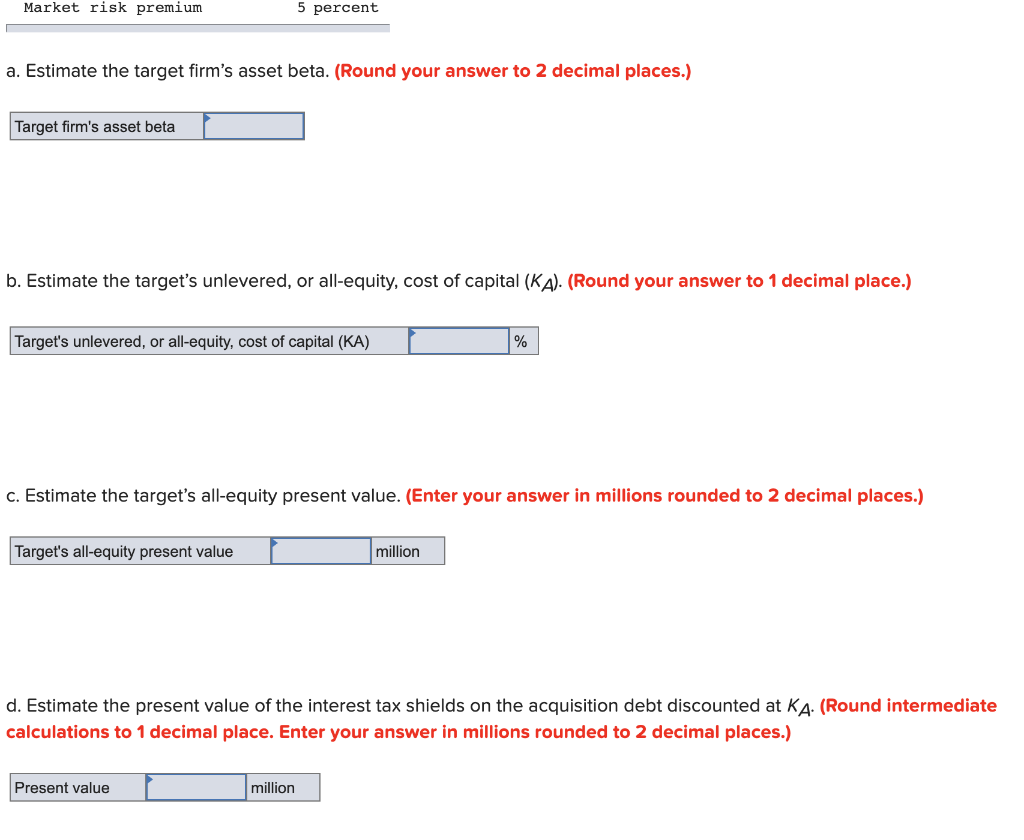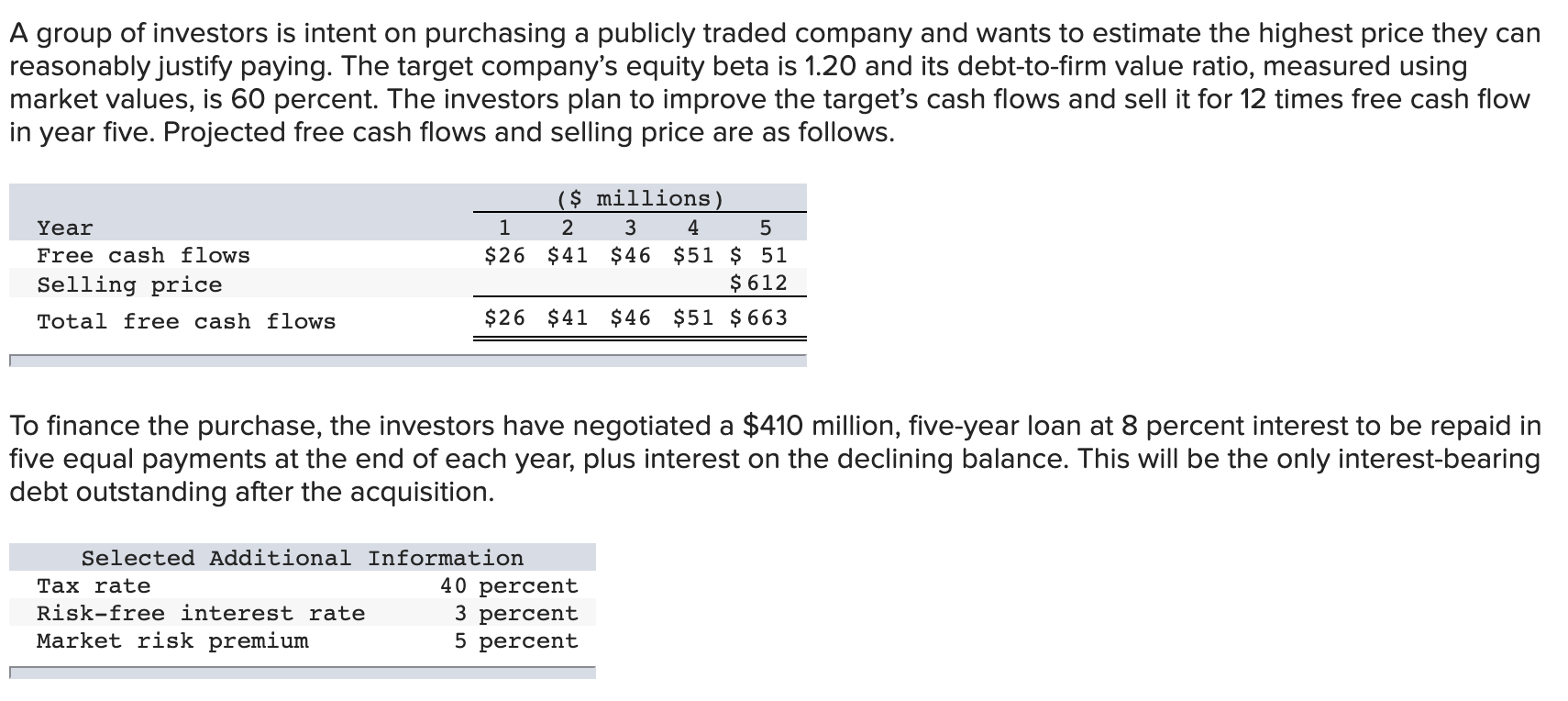

Market risk premium 5 percent a. Estimate the target firm's asset beta. (Round your answer to 2 decimal places.) Target firm's asset beta b. Estimate the target's unlevered, or all-equity, cost of capital (KA). (Round your answer to 1 decimal place.) Target's unlevered, or all-equity, cost of capital (KA) % c. Estimate the target's all-equity present value. (Enter your answer in millions rounded to 2 decimal places.) Target's all-equity present value million d. Estimate the present value of the interest tax shields on the acquisition debt discounted at KA. (Round intermediate calculations to 1 decimal place. Enter your answer in millions rounded to 2 decimal places.) Present value million A group of investors is intent on purchasing a publicly traded company and wants to estimate the highest price they can reasonably justify paying. The target company's equity beta is 1.20 and its debt-to-firm value ratio, measured using market values, is 60 percent. The investors plan to improve the target's cash flows and sell it for 12 times free cash flow in year five. Projected free cash flows and selling price are as follows. Year Free cash flows Selling price Total free cash flows ($ millions) 1 2 3 4 5 $26 $41 $ 46 $51 $ 51 $ 612 $26 $41 $46 $51 $ 663 To finance the purchase, the investors have negotiated a $410 million, five-year loan at 8 percent interest to be repaid in five equal payments at the end of each year, plus interest on the declining balance. This will be the only interest-bearing debt outstanding after the acquisition. Selected Additional Information Tax rate 40 percent Risk-free interest rate 3 percent Market risk premium 5 percent Market risk premium 5 percent a. Estimate the target firm's asset beta. (Round your answer to 2 decimal places.) Target firm's asset beta b. Estimate the target's unlevered, or all-equity, cost of capital (KA). (Round your answer to 1 decimal place.) Target's unlevered, or all-equity, cost of capital (KA) % c. Estimate the target's all-equity present value. (Enter your answer in millions rounded to 2 decimal places.) Target's all-equity present value million d. Estimate the present value of the interest tax shields on the acquisition debt discounted at KA. (Round intermediate calculations to 1 decimal place. Enter your answer in millions rounded to 2 decimal places.) Present value million A group of investors is intent on purchasing a publicly traded company and wants to estimate the highest price they can reasonably justify paying. The target company's equity beta is 1.20 and its debt-to-firm value ratio, measured using market values, is 60 percent. The investors plan to improve the target's cash flows and sell it for 12 times free cash flow in year five. Projected free cash flows and selling price are as follows. Year Free cash flows Selling price Total free cash flows ($ millions) 1 2 3 4 5 $26 $41 $ 46 $51 $ 51 $ 612 $26 $41 $46 $51 $ 663 To finance the purchase, the investors have negotiated a $410 million, five-year loan at 8 percent interest to be repaid in five equal payments at the end of each year, plus interest on the declining balance. This will be the only interest-bearing debt outstanding after the acquisition. Selected Additional Information Tax rate 40 percent Risk-free interest rate 3 percent Market risk premium 5 percent








